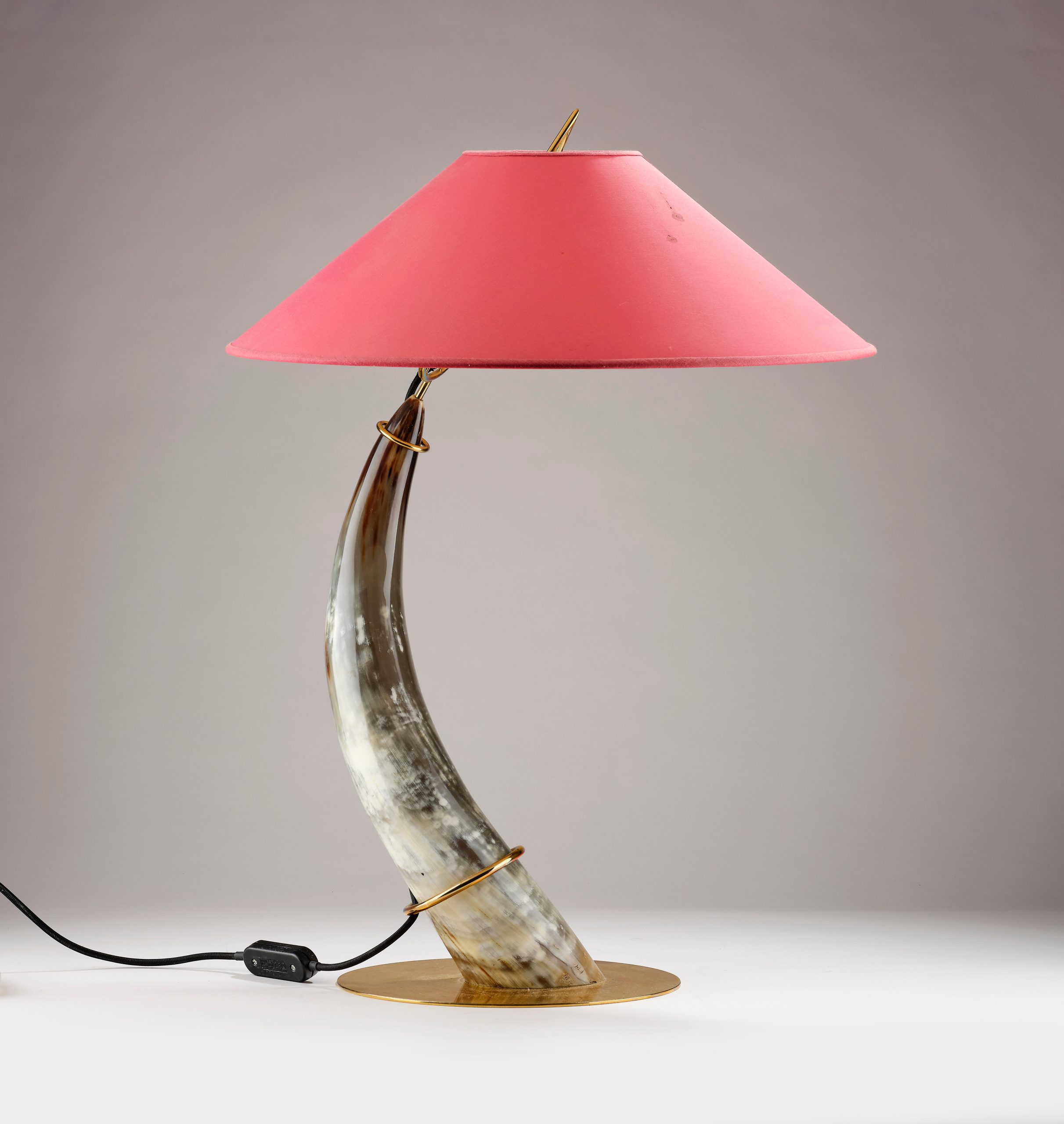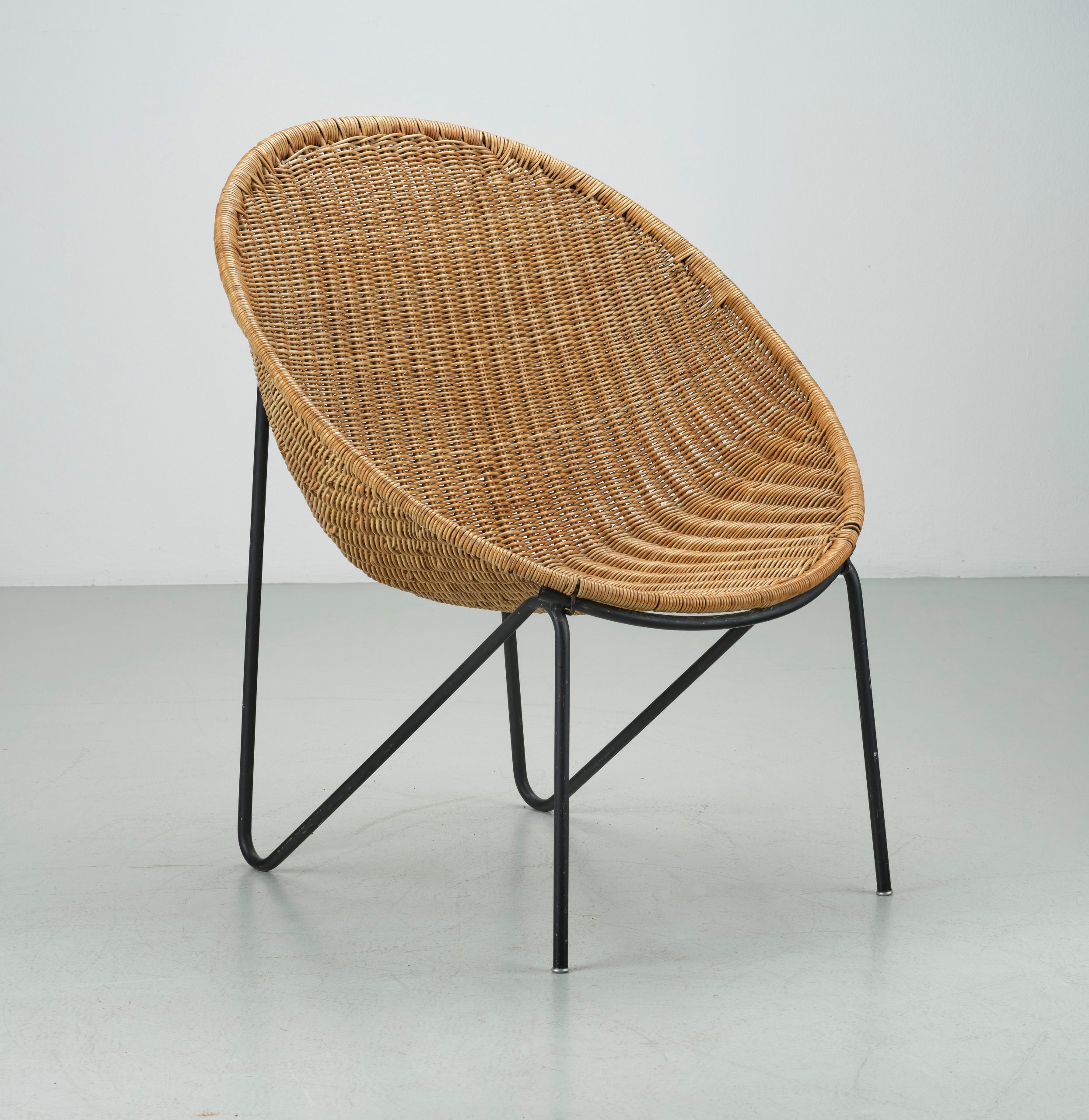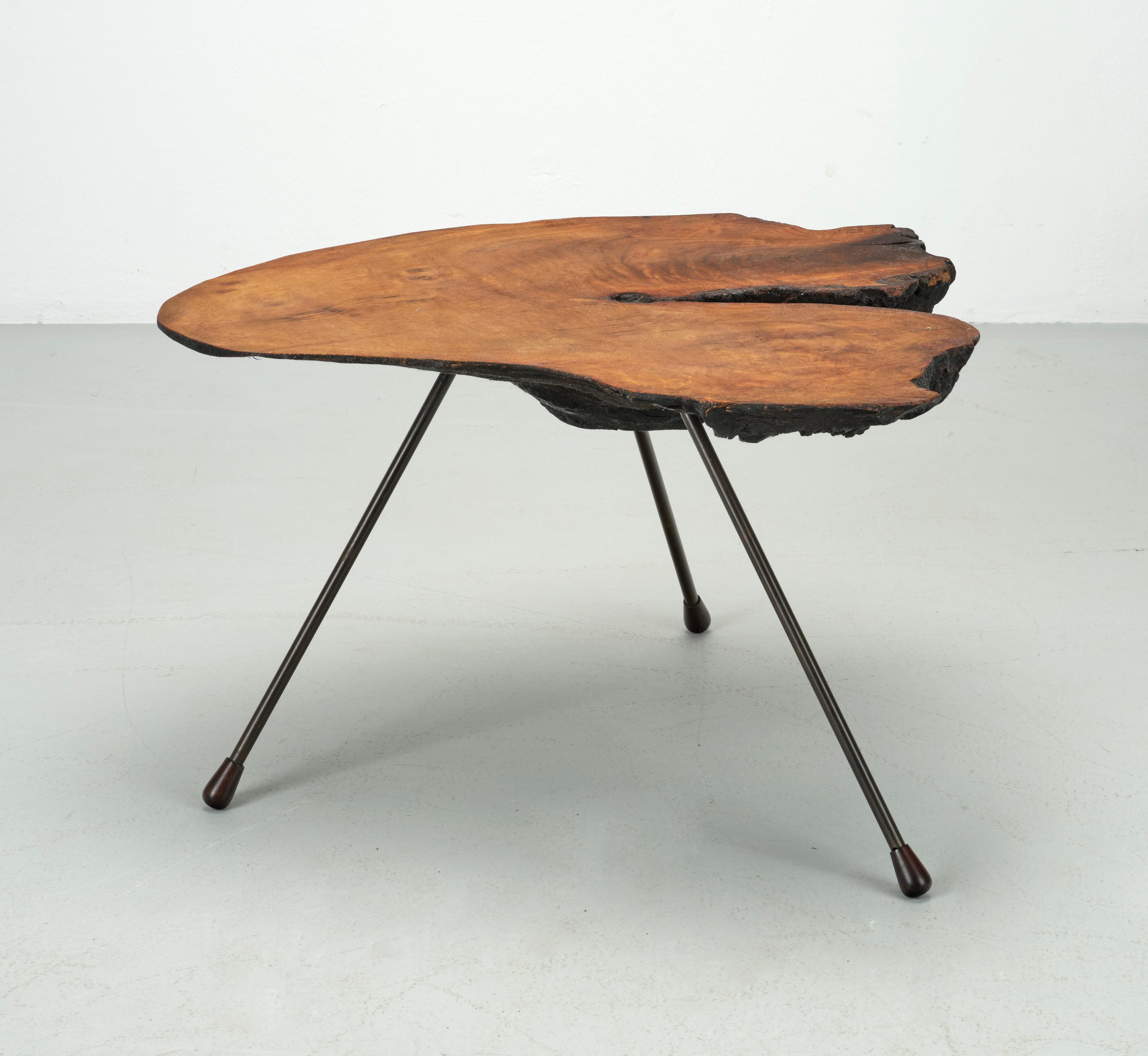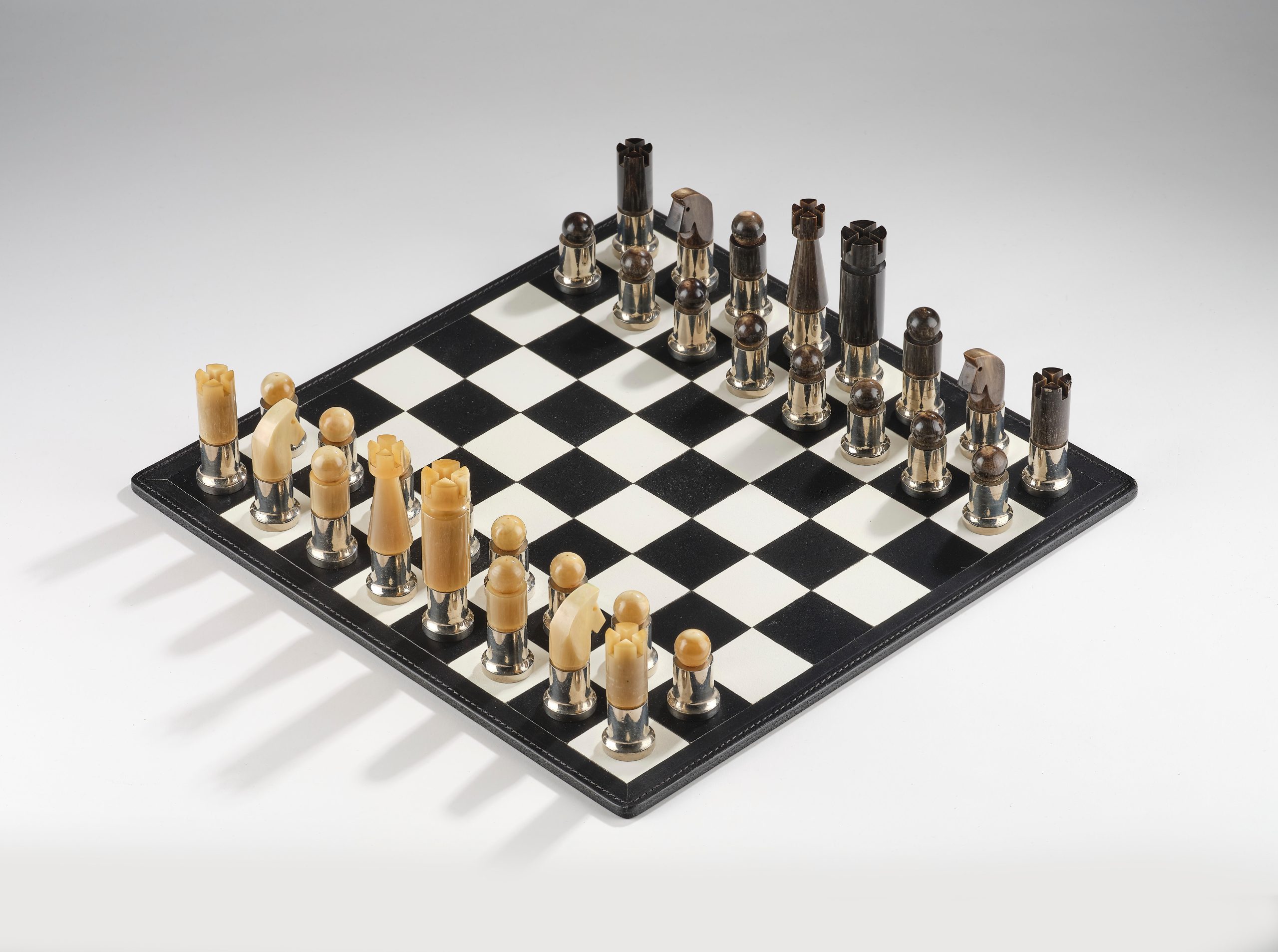Auböck at the MAK and Dorotheum
For five generations, the Carl Auböck workshop has been a driving influence in Austrian art and furniture design. With distinctive models that combine functionality, innovation, and traditional craftsmanship, it has created a unique style. Supported by the Dorotheum, Vienna’s Museum of Applied Arts (MAK) is dedicating the exhibition ICONIC AUBÖCK, which runs until 6 January 2025, to this influential workshop. The exhibition focusses on the formative period between and after the world wars up to the experimental 1980s. For the first time, the work of the sculptor and textile artist Mara Uckunowa, who met Carl Auböck at the Bauhaus in Weimar and later became his wife, will also be shown.
Simultaneously, on September 19, 2024, around 200 objects from the Carl Auböck workshop will be auctioned at Dorotheum under the title The Carl Auböck workshop – Austrian arts and crafts in focus, including collector’s items such as the famous tree tables, lamps, and home accessories.
Bärbel Vischer, custodian of the MAK Contemporary Art Collection, has been curator at the MAK since 2007. In an interview with Dorotheum, she discusses the exhibition, highlighting the relevance and evolution of the Carl Auböck workshop.
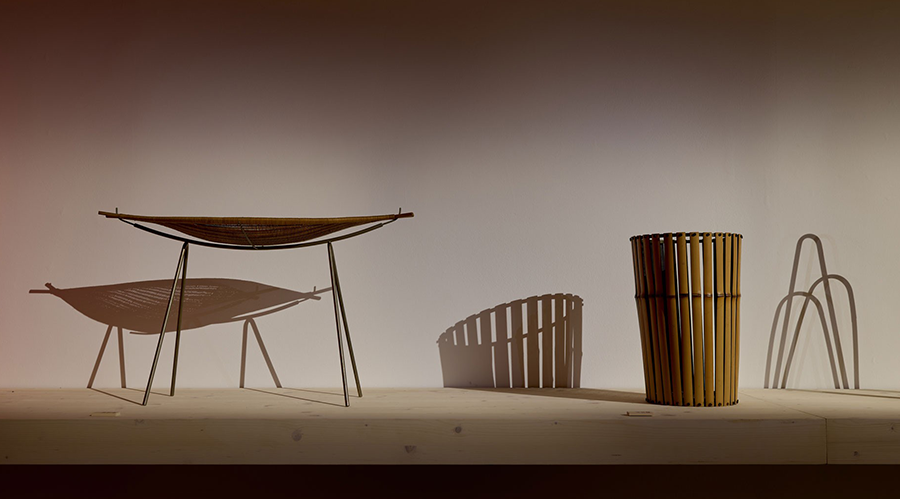
DOROTHEUM: What gives the design of the Auböck workshop—especially during the interwar and post-war periods—the defining power to influence and inspire an entire generation of Austrian design? What elements and characteristics make Auböck’s designs so “iconic”?
Bärbel Vischer: In his designs, Carl Auböck II (1900–1957) combined a highly personal, artistic approach with trends from Vienna and international art and design movements. Many of his works have a sculptural quality and are characterised by a unique material language. At the same time, he played with surrealistic references and motifs—embracing the magical, the marginal, the play with symbols and the fetish as well as the attraction to technology.
DOROTHEUM: How have the designs and direction of the workshop evolved and changed over the generations?
Bärbel Vischer: The exhibition addresses living culture as an experimental field, showcasing productions from the interwar and post-war periods to the 1980s, featuring works from three generations of the workshop. This results in an eclectic collection, similar to the archive in Bernardgasse. Each designer developed their own artistic language, yet many commonalities are apparent.
DOROTHEUM: How did Carl Auböck incorporate his training and experiences at the Bauhaus into his designs? Are there specific exhibits in the exhibition that particularly highlight this influence or that have a remarkable provenance or backstory (also in relation to the concept of the objet trouvé)?
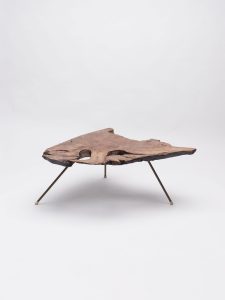
Bärbel Vischer: Auböck’s objects are characterised by minimalist, abstract, organic, or technoid combinations of materials, forms, and surfaces. His method of taking objects out of their context and assigning them new functions—such as an ivory billiard ball used in a desk set or various tree segment forms for his tree tables—and finding new material combinations are central themes of modernity.
Johannes Itten (1888–1967) was his mentor in Vienna. A brush drawing with black tea, created in Itten’s class in 1919 as part of a series, already shows Auböck’s exploration of line and movement as form. At the Bauhaus in Weimar, he also met Walter Gropius (1883–1969), Paul Klee (1879–1940), and Oskar Schlemmer (1888–1943). A Mask (1931) by Auböck references Schlemmer’s masks for art figures, such as the Kugelhände Figurine Mask (1922) for the Triadic Ballet.
DOROTHEUM: The exhibition highlights the materiality of Auböck’s creations. What role do different materials like brass, wood, horn, leather, and natural fibres play in the design of Auböck objects?
Bärbel Vischer: Auböck drew inspiration from the formal material properties and aesthetics of the forms and surfaces of materials. The resources of the materials were not limited to Europe but were also linked to European colonial history or reflected the material scarcity caused by World War II.
DOROTHEUM: Many Auböck objects are characterised by humorous gestures and surprising motifs. How do these designs balance the aspect of humour with practical functionality?
Bärbel Vischer: These objects act as conversation pieces that brilliantly combine the absurd and the functional. This tradition can be found in Surrealism or even in Baroque art. Auböck’s works are meant to invite one or more viewers or participants to an (internal) conversation.
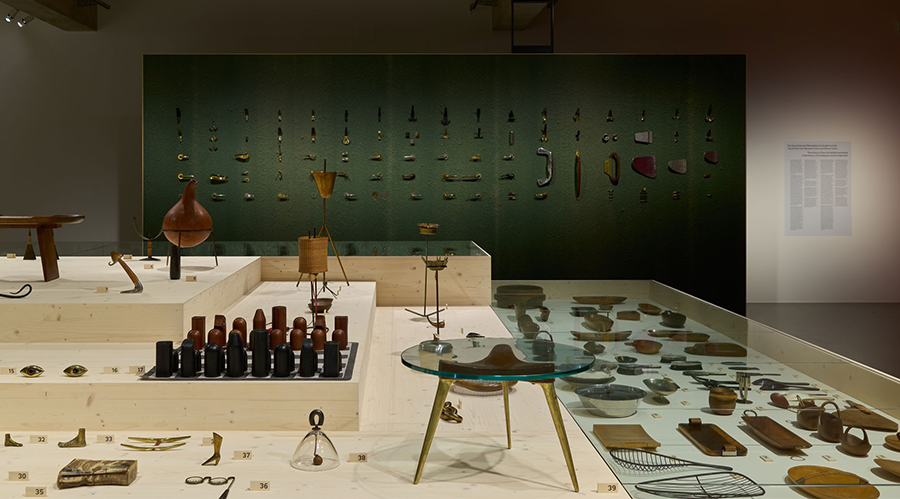
DOROTHEUM: The exhibition approaches the exhibits through the lens of surrealism. What does this mean, and why was the surrealist perspective chosen?
Bärbel Vischer: Auböck II incorporated everyday or natural objects into his repertoire of forms, initiating a surrealist transformation. His hybrid objects display a convergence of different levels of meaning or function, which are often not immediately decipherable. Sculptural items like the hand, the egg, the clock, or the stone in leather manage to hide their actual functionality while surprising with their form and usage.
DOROTHEUM: Mara Uckunowa’s oeuvre is being presented at the MAK for the first time. What distinguishes her work, and how did she influence the designs of the Auböck workshop?
Mara Uckunowa (1895–1987) met Carl Auböck II at the Bauhaus in Weimar and later married him. Her artistic development was influenced by Johannes Itten, Georg Muche (1895–1987), and Josef Albers (1888–1976). She had previously studied at the Munich School of Applied Arts, where the textile designer Gunta Stölzl (1897–1983) was among her fellow students. Her woven textile designs from the 1930s and 1940s are characterised by their texture, colour, and abstraction. A woven fabric covering for a newspaper and magazine stand (1938), which we feature in the exhibition, is considered one of the few surviving collaborative works by the couple.
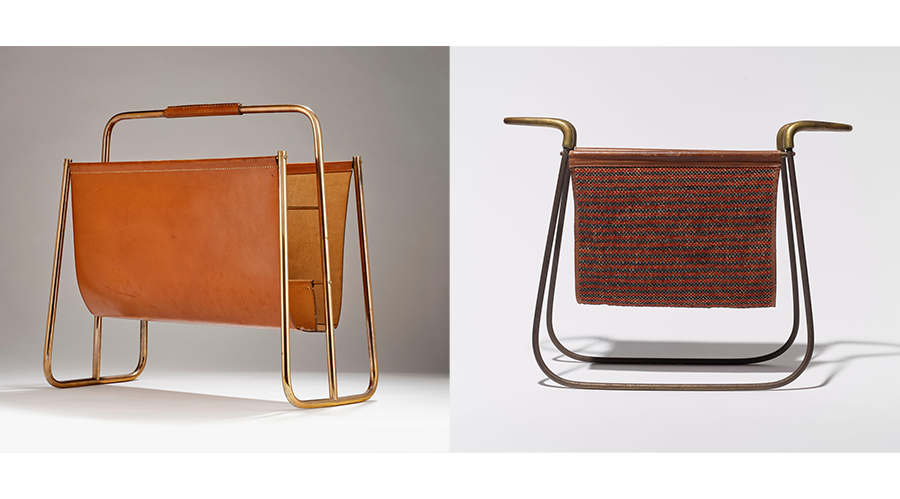
AUCTION
The Carl Auböck Workshop – Austrian Arts and Crafts in Focus
Online Auction
19 September 2024, 2 pm
Viewing
13.09.-19.09.2024
Palais Dorotheum, Dorotheergasse 17, 1010 Vienna
Magda Pfabigan
Tel. +43-1-515 60-383

